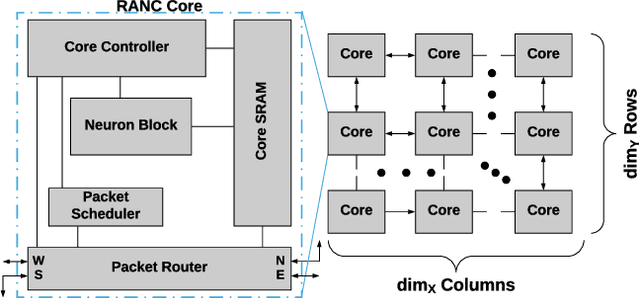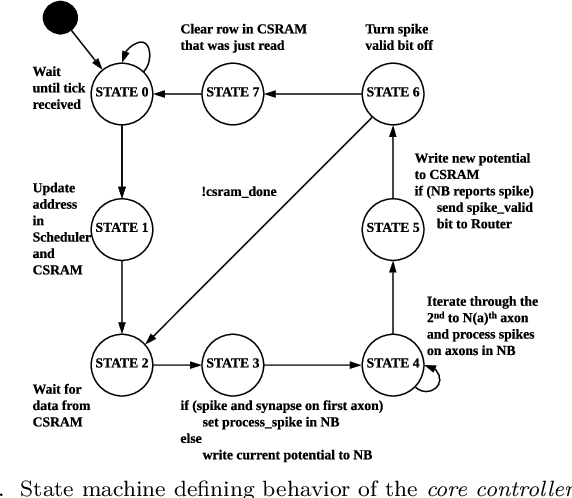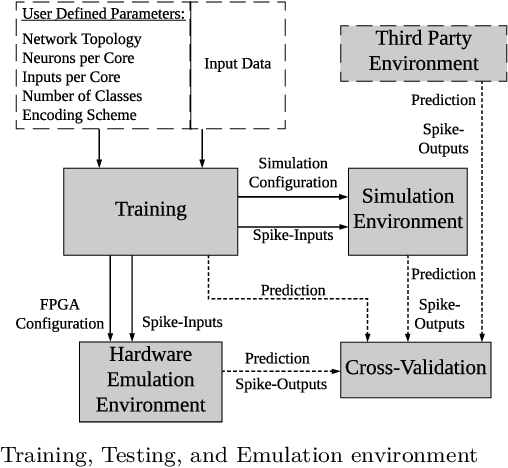Ruben Purdy
BRIDGES: Bridging Graph Modality and Large Language Models within EDA Tasks
Apr 07, 2025Abstract:While many EDA tasks already involve graph-based data, existing LLMs in EDA primarily either represent graphs as sequential text, or simply ignore graph-structured data that might be beneficial like dataflow graphs of RTL code. Recent studies have found that LLM performance suffers when graphs are represented as sequential text, and using additional graph information significantly boosts performance. To address these challenges, we introduce BRIDGES, a framework designed to incorporate graph modality into LLMs for EDA tasks. BRIDGES integrates an automated data generation workflow, a solution that combines graph modality with LLM, and a comprehensive evaluation suite. First, we establish an LLM-driven workflow to generate RTL and netlist-level data, converting them into dataflow and netlist graphs with function descriptions. This workflow yields a large-scale dataset comprising over 500,000 graph instances and more than 1.5 billion tokens. Second, we propose a lightweight cross-modal projector that encodes graph representations into text-compatible prompts, enabling LLMs to effectively utilize graph data without architectural modifications. Experimental results demonstrate 2x to 10x improvements across multiple tasks compared to text-only baselines, including accuracy in design retrieval, type prediction and perplexity in function description, with negligible computational overhead (<1% model weights increase and <30% additional runtime overhead). Even without additional LLM finetuning, our results outperform text-only by a large margin. We plan to release BRIDGES, including the dataset, models, and training flow.
RANC: Reconfigurable Architecture for Neuromorphic Computing
Nov 01, 2020



Abstract:Neuromorphic architectures have been introduced as platforms for energy efficient spiking neural network execution. The massive parallelism offered by these architectures has also triggered interest from non-machine learning application domains. In order to lift the barriers to entry for hardware designers and application developers we present RANC: a Reconfigurable Architecture for Neuromorphic Computing, an open-source highly flexible ecosystem that enables rapid experimentation with neuromorphic architectures in both software via C++ simulation and hardware via FPGA emulation. We present the utility of the RANC ecosystem by showing its ability to recreate behavior of the IBM's TrueNorth and validate with direct comparison to IBM's Compass simulation environment and published literature. RANC allows optimizing architectures based on application insights as well as prototyping future neuromorphic architectures that can support new classes of applications entirely. We demonstrate the highly parameterized and configurable nature of RANC by studying the impact of architectural changes on improving application mapping efficiency with quantitative analysis based on Alveo U250 FPGA. We present post routing resource usage and throughput analysis across implementations of Synthetic Aperture Radar classification and Vector Matrix Multiplication applications, and demonstrate a neuromorphic architecture that scales to emulating 259K distinct neurons and 73.3M distinct synapses.
 Add to Chrome
Add to Chrome Add to Firefox
Add to Firefox Add to Edge
Add to Edge